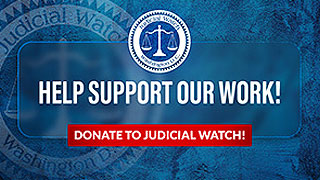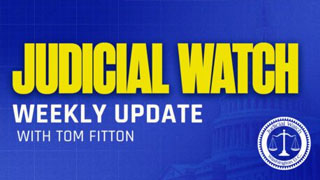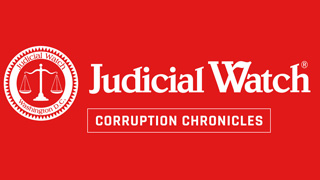
Hillary’s Email Troubles & Whitewater
Hillary Clinton may or may not be indicted in the State Department emails scandal, but one thing is certain: she’s been to this dance before, facing possible criminal charges. Mrs. Clinton “may have been involved in a crime in 1986,” according to never-before-seen portions of an Office of Independent Counsel (OIC) memorandum in the Whitewater affair obtained by Judicial Watch.
The newly obtained document is an unredacted copy of a highly detailed April 10, 1998 OIC memo prepared for a key meeting to discuss the indictment of Mrs. Clinton. It is titled “Hillary Rodham Clinton: Summary of Evidence and Suggested Reading.”
In January, Judicial Watch published a redacted version of the memo obtained from the National Archives and Records Administration under the Freedom of Information Act.
Today, the new, unredacted version of the memo—reported exclusively by Breitbart—fills in important blanks in the criminal case against Mrs. Clinton.
The entire text of the memo can now be pieced together from the redacted version released by the National Archives and the new, unredacted version, reported here for the first time.
The broad contours of the Whitewater case against Mrs. Clinton are well known. With Governor Bill Clinton running Arkansas, Mrs. Clinton leveraged her work at the Rose Law Firm into a series of transactions on behalf of a corrupt financial institution, Madison Guaranty Savings & Loan, run by a longtime Clinton crony, James McDougal. Among the transactions was a document drafted by Mrs. Clinton to conceal a series of fraudulent loans that were used to deceive federal bank examiners.
The fraudulent loans were part of a land deal known as Castle Grande. Mrs. Clinton, along with her Rose Law Firm partner Webster Hubbell—later given a high-ranking post at the Justice Department by President Clinton—handled the Madison Guaranty accounts for law firm. Hubbell’s father-in-law, Seth Ward, also played a key role in the Madison accounts.
In the mid-1980s, federal bank regulators started taking a close look at Madison Guaranty and concluded that Castle Grande was a sham, a crime, and part of a pyramid scheme to enrich insiders and hide the S&L’s disintegrating finances. According to the newly obtained document, “Hillary Clinton and Hubbell concealed their involvement in Castle Grande.”
OIC prosecutors turned over every rock in Clintons’ financial world and drafted several possible indictments of Clinton and Hubbell. Last year, Judicial Watch disclosed that the National Archives holds versions of the draft indictments, but has refused to produce them in response to Freedom of Information Act requests, citing concerns for Mrs. Clinton’s privacy. Judicial Watch President Tom Fitton denounced the move as “a political decision to protect [Clinton’s] candidacy” and vowed to press on in court.
The new, unredacted version of the OIC memo spells out the criminal case against Mrs. Clinton:
Here is how we would characterize this case in the legal terms of an indictment: “The object of the conspiracy was to conceal, by unlawful means, the true facts relating to HILLARY RODHAM CLINTON’s and WEBSTER LEE HUBBELL’s relationship with Seth Ward, Madison Guaranty Savings and Loan and Madison Financial Corporation. By concealing these facts HILLARY RODHAM CLINTON and WEBSTER LEE HUBBELL would avoid and evade potential criminal and civil liability, fraudulently secure additional income for the Rose Law Firm and safeguard the political campaigns of William Jefferson Clinton.” What this means in practice is that Hillary Clinton and Hubbell may have been involved in a crime in 1986. When they realized their potential criminal, civil and political exposure, they concealed their activities, repeatedly and with great effect. The case would be the story of how that happened.
The crime? Castle Grande “cross loans,” and an “option agreement” drafted by Mrs. Clinton, were used to deceive federal bank examiners.
The Clinton campaign did not reply to requests for a response to the charges. Mr. Hubbell declined to comment.
The newly revealed document fills in some of the blanks relating to prosecution theories of criminal conduct by Mrs. Clinton, Hubbell, and a third Rose Firm partner, Vincent Foster. The document notes that the partners were “concealing conduct bearing on possible civil and criminal liability.”
As Bill Clinton’s 1992 presidential campaign gained speed, media pressure on Mrs. Clinton increased. Reporters started asking questions about Madison Guaranty. The S&L had imploded in the 1980s and was the subject of several civil and criminal cases. The Rose Law Firm partners—Clinton, Hubbell and Foster—were well aware of the campaign’s vulnerability on the Madison issue.
“Hillary Clinton and Bill Clinton were business partners of the owner of a failed S&L,” notes the National Archives version of the OIC memo. “[I]t was alleged McDougal had hired Hillary Clinton to represent him before state agencies that reported to her husband as a way of indirectly wielding influence over the decisions being made….the campaign and Hillary Clinton personally provided the public with inaccurate information regarding: how [Madison] came to retain the [Rose Law Firm] and the extent and nature of Hillary Clinton’s work before state agencies—inaccurate stories that Hillary Clinton and Hubbell were ‘stuck with’ as official investigations began.”
Federal investigations—prompted by news reports and the Clintons’ often evasive, incomplete responses to questions—soon began. The Resolution Trust Corp., the Federal Deposit Insurance Corp., Congress, and the OIC all questioned Mrs. Clinton under oath.
Many records were missing. Following the campaign, notes the National Archives version of the memo, “Hubbell and Vince Foster removed all remaining [Rose] records relating to the [firm’s] and Hillary Clinton’s work for [Madison] from the law firm. In various parcels those records were sent to Washington, D.C.”
Undisclosed until today is a censored line from that version of the memo: Rose attorneys, it says, “liken the removal of these firm records to theft.”
The National Archives version of the memo notes: “Two copies of the most significant of these records, Hillary Clinton’s billing records for the work she did for [Madison] are known to exist—one set was discovered in a brief case in Vince Foster’s attic in July 1997; the other set was discovered in the [White House] Book Room adjacent to Hillary Clinton’s office in August 1995 and publicly released in January 1996.”
The 1996 news of the discovery of a set of billing records in the White House set off a furor. The documents had been under subpoena for two years. Mrs. Clinton was summoned to a grand jury to explain.
Why were the billing records so important? Mrs. Clinton by that time had made numerous sworn statements to federal investigators and Congress. If the statements were false, that was a crime. The billing records might prove whether Mrs. Clinton was telling the truth or lying.
And if Mrs. Clinton was hiding documents under subpoena—a charge she denied, saying she had no knowledge of how the billing records got to the White House—then she might be guilty of obstruction of justice.
The OIC believed that Mrs. Clinton knew precisely where the records were and had reviewed them during the presidential campaign. According to the National Archives version of the memo: “The evidence supports the conclusion that Hillary Clinton reviewed the billing records in detail in February-March 1992, and that she retained a copy of the records for reference and use during 1992-1995.”
Undisclosed until today—that is, censored from the National Archives version of the memo—is the prosecutors’ conclusion about what this would mean to a jury: “a reasonable jury is likely to conclude that her statements to investigators during 1994-1996 were inaccurate and misleading [and] were made with the knowledge of their falsity. Hillary Clinton, Hubbell and Vince Foster’s concealment and destruction of the relevant records is substantial corroborative evidence of their consciousness of guilt.”
The National Archives version of the memo continues: “What, then, are the crimes under consideration? Between January 1994 and February 1996 both Hillary Clinton and Hubbell made numerous sworn statements to the RTC, the FDIC, the Senate and the House of Representatives, and to OIC. Each of these reflected and embodied materially inaccurate stories relating to: how [the Rose Law Firm] came to be retained by [Madison Guaranty]; Hillary Clinton’s role in the [Castle Grande] venture; Hillary Clinton’s role in representing [Madison] before state agencies; Hubbell’s representations to the RTC and FDIC regarding Hillary Clinton’s role in the [Castle Grande] venture; and the removal of records from [the Rose firm]. The question, generally, is not whether the statements are inaccurate, but whether they are willfully so.”
Sound familiar? As in Whitewater, Mrs. Clinton now faces questions about missing records—the thousands of emails supposedly deleted forever from her computer.
As in Whitewater, a series of shifting explanations seem to dig her deeper into a hole.
As in Whitewater, she works behind a phalanx of lawyers well-schooled in Clinton damage control—indeed some of the very same lawyers who steered her through the OIC investigation.
In the end, Mrs. Clinton defeated the OIC. Prosecutors decided not to seek an indictment from a grand jury, concluding that they could not win the largely circumstantial case against such a popular, high-profile defendant.
Also looming large in the OIC’s thinking: Monica Lewinsky. The Lewinsky investigation was hurtling along a separate track. Prosecutors were convinced they had overwhelming evidence that President Clinton had committed perjury and obstruction of justice in the Lewinsky case.
The case against Mrs. Clinton was abandoned and the full focus of the OIC turned to Lewinsky.
As one prosecutor later remarked, “Monica saved Hillary.”
Note: this article originally appeared on Breitbart.com















